Anh T. Pham
Secrecy Performance Analysis of Space-to-Ground Optical Satellite Communications
Feb 21, 2024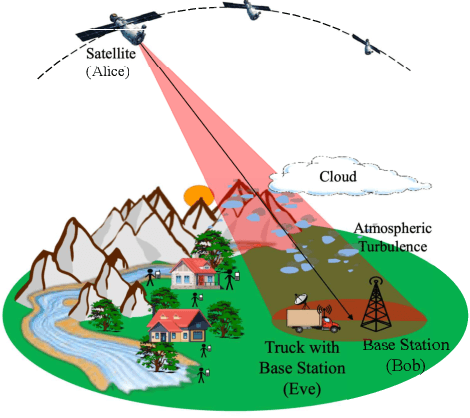
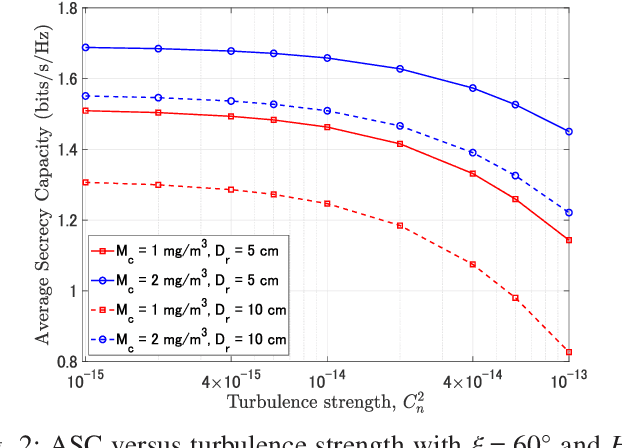
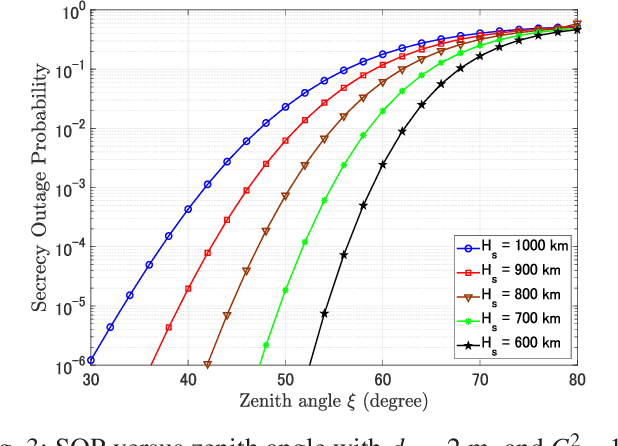
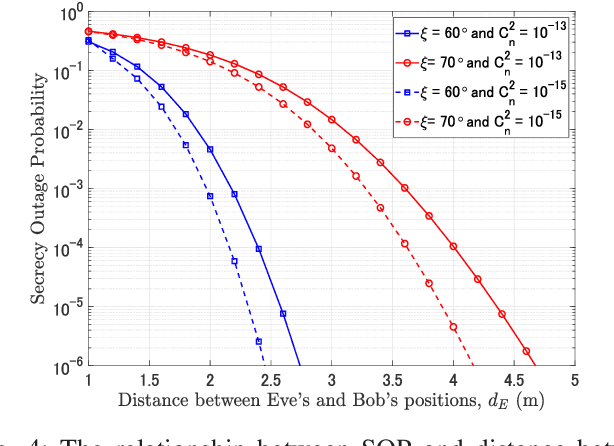
Abstract:Free-space optics (FSO)-based satellite communication systems have recently received considerable attention due to their enhanced capacity compared to their radio frequency (RF) counterparts. This paper analyzes the performance of physical layer security of space-to-ground intensity modulation/direct detection FSO satellite links under the effect of atmospheric loss, misalignment, cloud attenuation, and atmospheric turbulence-induced fading. Specifically, a wiretap channel consisting of a legitimate transmitter Alice (i.e., the satellite), a legitimate user Bob, and an eavesdropper Eve over turbulence channels modeled by the Fisher-Snedecor $\mathcal{F}$ distribution is considered. The secrecy performance in terms of the average secrecy capacity, secrecy outage probability, and strictly positive secrecy capacity are derived in closed-form. Simulation results reveal significant impacts of satellite altitude, zenith angle, and turbulence strength on the secrecy performance.
Energy-Efficient Precoding for Multi-User Visible Light Communication with Confidential Messages
Feb 22, 2021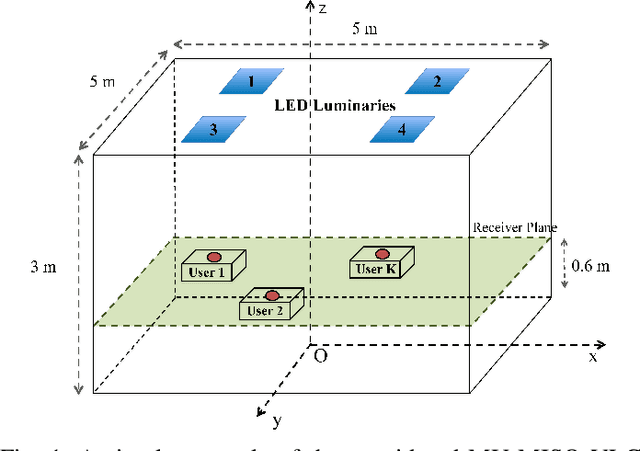
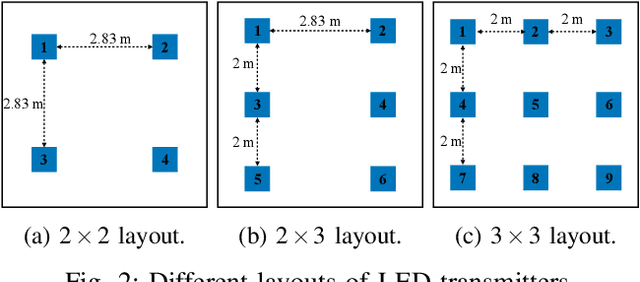
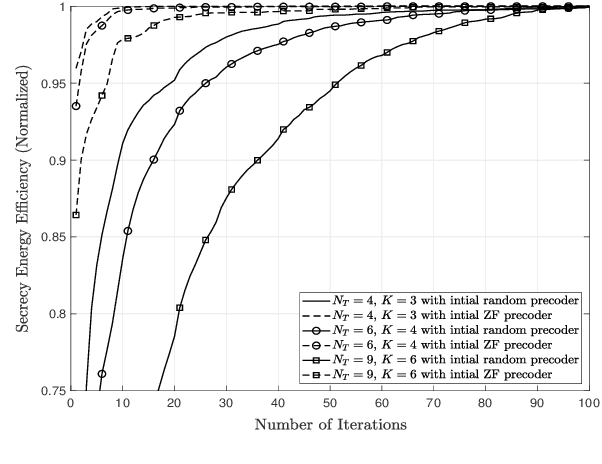
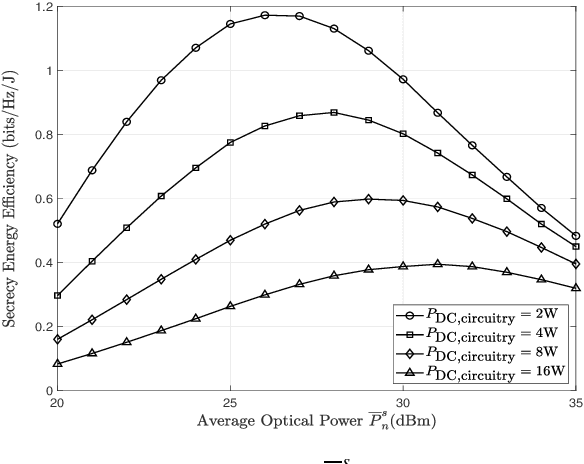
Abstract:In this paper, an energy-efficient precoding scheme is designed for multi-user visible light communication (VLC) systems in the context of physical layer security, where users' messages are kept mutually confidential. The design problem is shown to be non-convex fractional programming, therefore Dinkelbach algorithm and convex-concave procedure (CCCP) based on the first-order Taylor approximation are utilized to tackle the problem. Numerical results are performed to show the convergence behaviors and the performance of the proposed solution for different parameter settings.
Data Masking with Privacy Guarantees
Jan 08, 2019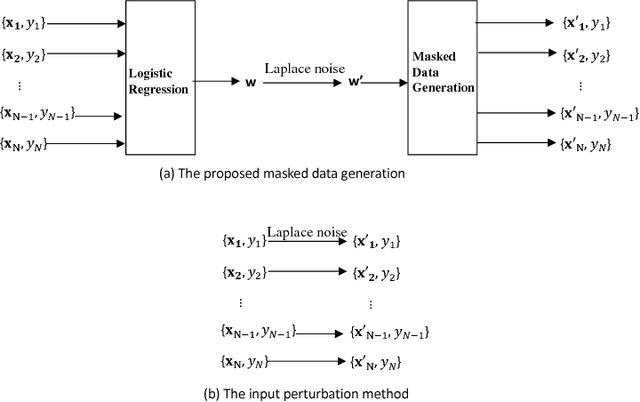



Abstract:We study the problem of data release with privacy, where data is made available with privacy guarantees while keeping the usability of the data as high as possible --- this is important in health-care and other domains with sensitive data. In particular, we propose a method of masking the private data with privacy guarantee while ensuring that a classifier trained on the masked data is similar to the classifier trained on the original data, to maintain usability. We analyze the theoretical risks of the proposed method and the traditional input perturbation method. Results show that the proposed method achieves lower risk compared to the input perturbation, especially when the number of training samples gets large. We illustrate the effectiveness of the proposed method of data masking for privacy-sensitive learning on $12$ benchmark datasets.
Dynamic Programming for Instance Annotation in Multi-instance Multi-label Learning
Nov 14, 2014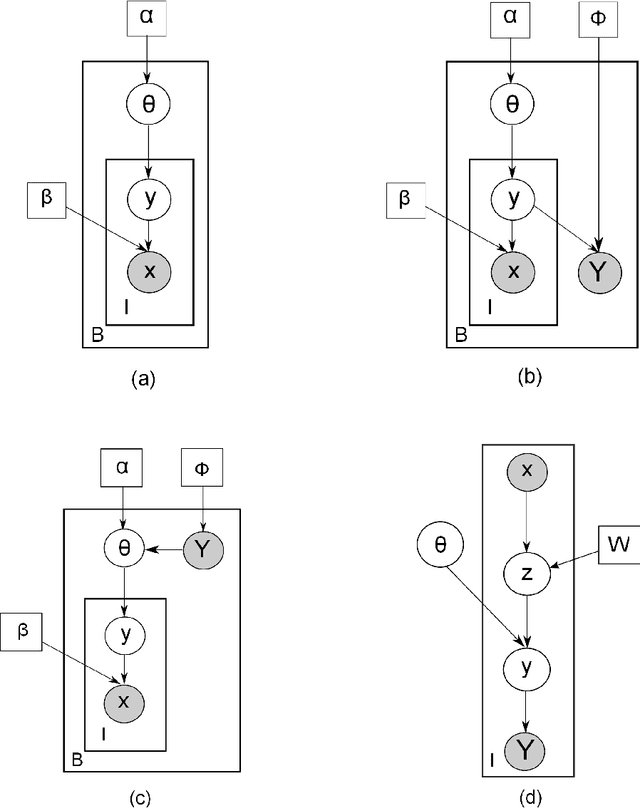
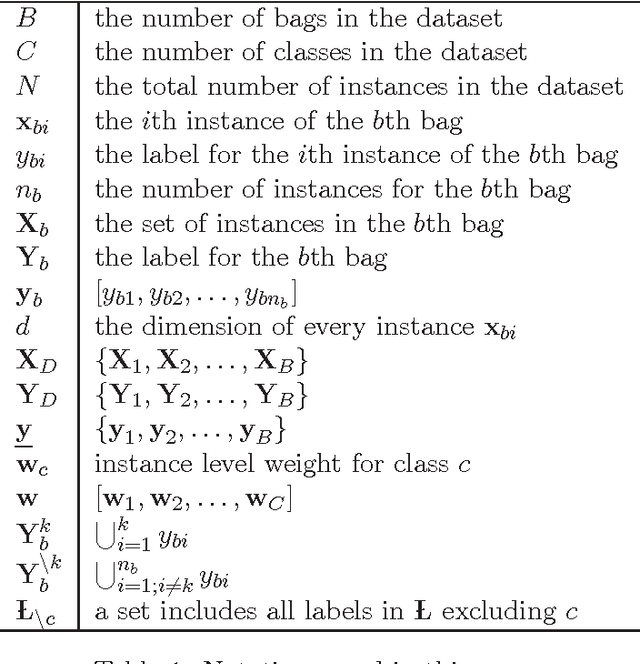
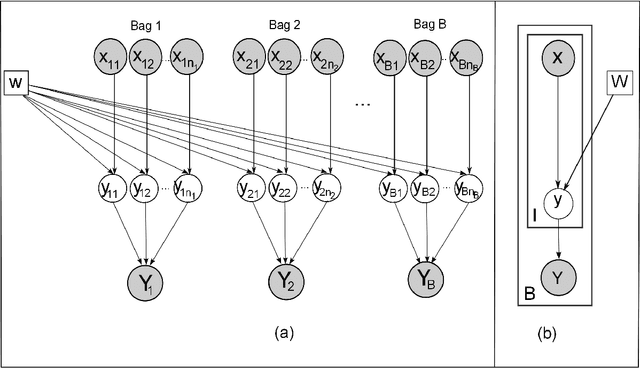

Abstract:Labeling data for classification requires significant human effort. To reduce labeling cost, instead of labeling every instance, a group of instances (bag) is labeled by a single bag label. Computer algorithms are then used to infer the label for each instance in a bag, a process referred to as instance annotation. This task is challenging due to the ambiguity regarding the instance labels. We propose a discriminative probabilistic model for the instance annotation problem and introduce an expectation maximization framework for inference, based on the maximum likelihood approach. For many probabilistic approaches, brute-force computation of the instance label posterior probability given its bag label is exponential in the number of instances in the bag. Our key contribution is a dynamic programming method for computing the posterior that is linear in the number of instances. We evaluate our methods using both benchmark and real world data sets, in the domain of bird song, image annotation, and activity recognition. In many cases, the proposed framework outperforms, sometimes significantly, the current state-of-the-art MIML learning methods, both in instance label prediction and bag label prediction.
 Add to Chrome
Add to Chrome Add to Firefox
Add to Firefox Add to Edge
Add to Edge